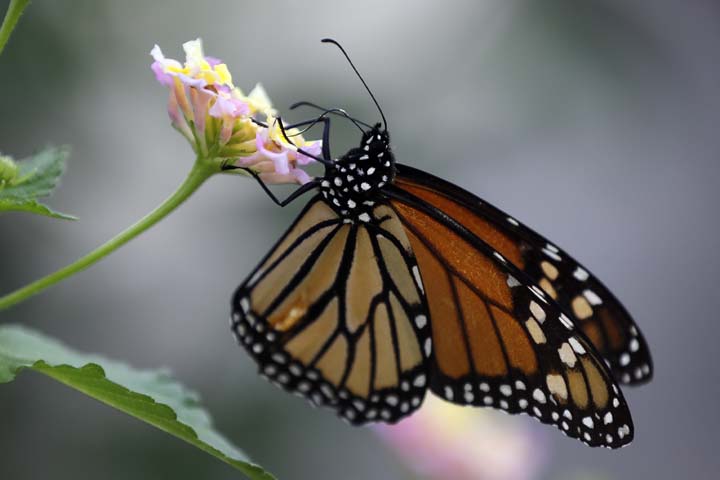Advertisement
Why You Should Worry About The Butterflies
ResumeThis year’s monarch butterfly migration is the smallest ever recorded. We’ll ask why. It’s a big story. Plus: how climate change is creating new hybridized species.

We love butterflies, and monarch butterflies are called “monarch” for a reason. They are grand. All that fluttering orange and black display on a winged scale built to impress. To charm. But monarch butterflies are in trouble. This year saw the smallest migration ever recorded to their winter retreat in the mountains of Mexico. And if you are looking this summer for monarchs, they’ve been hard to find. There’s a reason, and it goes back to genetically-modified crops, say my guests today. This hour On Point: monarch butterflies, beautiful and in trouble.
-- Tom Ashbrook
Guests
Lincoln Brower, research professor of biology at Sweet Briar College.
Karen Oberhauser, associate professor in the department of fisheries, wildlife and conservation biology at the University of Minnesota. Director of the Monarchs in the Classroom and Monarch Larva Monitoring Programs.
Rick Mikula, President of Butterfly Rescue International. Author of "Garden Butterflies of North America."
From Tom's Reading List
Washington Post: Monarch butterflies keep disappearing. Here’s why. — "The number of butterflies migrating to Mexico has been dropping sharply. In 2012, just 60 million monarchs arrived at their overwintering habitats, a record low. And fresh data from WWF Mexico suggests that the current winter's numbers are even lower — down to just 33 million butterflies across 0.67 hectares (1.65 acres). That's the lowest area on record."
Scientific American: Climate Change May Disrupt Monarch Butterfly Migration — "A monarch butterfly navigates using a sun compass in its mid-brain and circadian clocks in its antennae. But, until now, what makes a monarch reverse its direction has remained a mystery. New research shows that the chill at the start of spring triggers this switch."
The Guardian: Endangered butterfly defies climate change with new diet and habitat -- "Other butterfly species have been changing habitat or diet to cope with a changing climate but the quino checkerspot is the first butterfly known to science to change both so rapidly. Many environmentalists fear that climate change is happening too quickly for species to adapt but, according to Parmesan, this surprising example shows that some apparentlydoomed species may be more resilient than we imagine."
Climate Change And Hybridized Species
Moises Velasquez-Manoff, science and environmental writer. Author of "An Epidemic of Absence." (@moisesvm)
New York Times: Should You Fear the Pizzly Bear? — "In an exceedingly brief period, coyote, wolf and dog genes have been remixed into something new: a predator adapted to a landscape teeming with both prey and another apex predator, us. And this mongrel continues to evolve. Javier Monzon, an evolutionary biologist at Stony Brook University, has found that Eastern coyotes living in areas with the highest densities of deer also carry the greatest number of wolf genes."
This program aired on August 20, 2014.